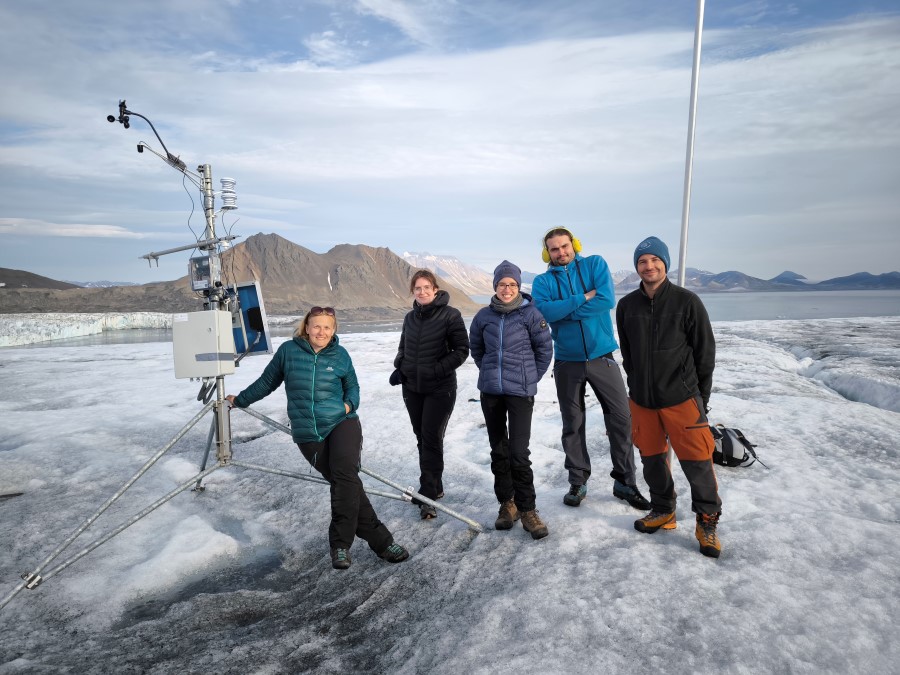This week, on August 20, a polar expedition to Svalbard by scientists from the Center for Polar Studies (CPS), in which two doctoral students from the International Environmental PhD School – Aleksandra Osika, MA, and Dawid Saferna, MA – participated, ended.
The researchers’ main goal was to understand how changes in the proximity of glaciers affect landforms and the local ecosystem. The researchers want to understand how the physical and chemical properties of the polar environment are changing, such as water balance and sediment transport to the sea. At the site, the researchers performed drone photogrammetric raids, measurements of flow rates in subglacial outflows and geomorphological mapping, among other things.
Check out Facbook of the Center for Polar Studies for more photos!
The project implements the tasks of a research project financed by the National Science Centre under the Preludium grant (2021/41/N/ST10/02070), the main goal of which is to reconstruct the extent of glaciers and the environment of southern Svalbard during the Holocene Climatic Optimum. The expedition is part of the Priority Research Areas of the University of Silesia in Katowice: Environmental and climate changes with the related social challenges. Additionally, during the expedition, research projects of doctoral students of the the International Environmental Doctoral School are carried out.
The research is carried out in accordance with the regulations of the Governor of Svalbard, and the expedition has been registered in the RiS database under the numbers 10511 A17 (CSP) and 12003 A3 (NCN Preludium, A. Osika). The expedition receives support from the BERA logistics and science centre and the CRIOS project – Cryosphere Integrated Observation Network on Svalbard. Scientific work is carried out based on the infrastructure of the Polish Polar Station in Hornsund and the Stanisław Baranowski Polar Station in Spitsbergen.

Photo by Olga Jabłońska

Photo by Natalia Łatacz

Photo by Natalia Łatacz